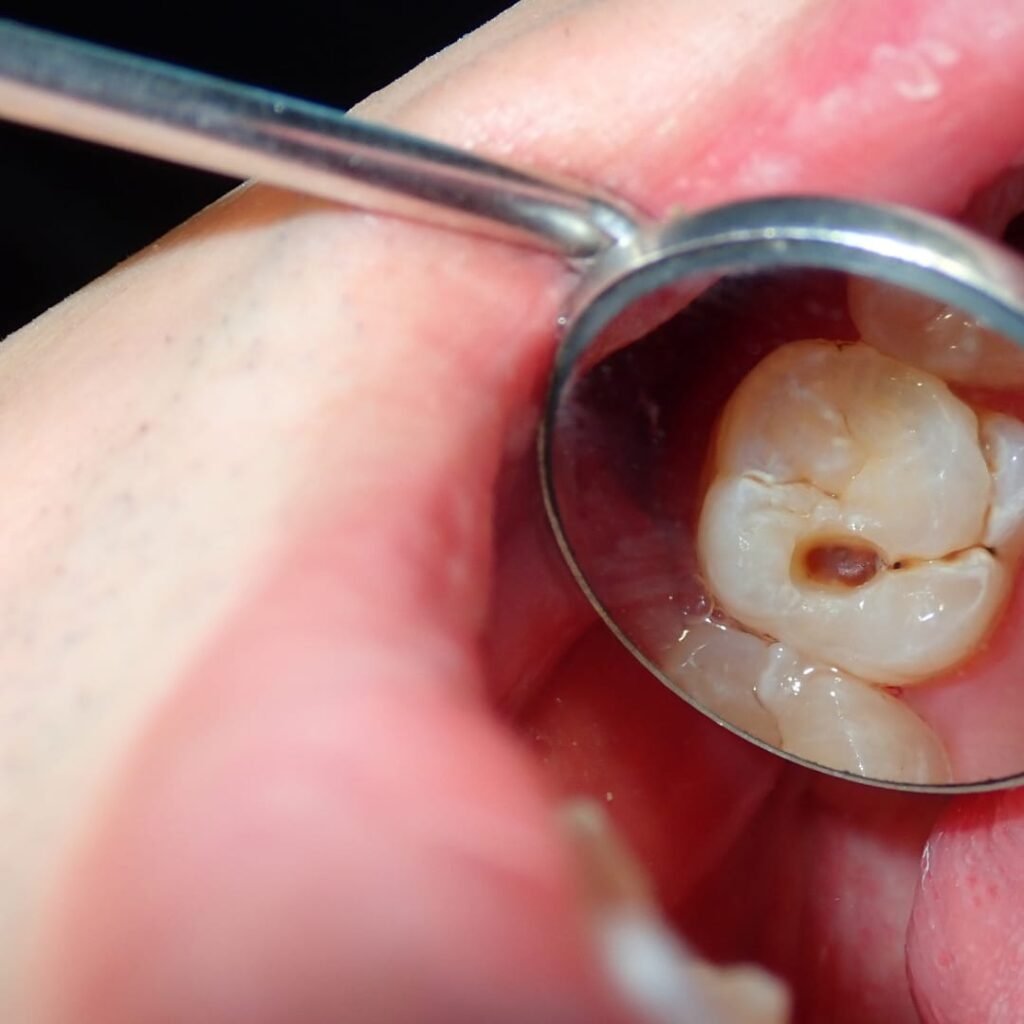Cavities: Causes, Symptoms, Prevention & Treatment
One of the most often occurring dental issues globally is tooth cavities, sometimes called dental caries or tooth decay. Children, adults, and even the elderly might be affected by them. Despite their prevalence, we should never overlook cavities. Untreated, they could cause discomfort, infection, and even tooth loss. Let’s explore what causes cavities, how to find them, and, most importantly, how to treat and avoid them.
What is Cavity?
A cavity in the hard surface of your tooth is a permanently damaged area that transforms into tiny holes or apertures. It begins when food—particularly starchy or sugary products—mixes with bacteria in your mouth to create plaque. The acid produced by this plaque wears down tooth enamel, causing decay.

Causes of Cavities
Several elements help cavities to develop:
- Bad oral hygiene—that is, irregular brushing or flossing
- Regular munching and consuming sweet drinks
- Dental bacteria
- Lack of saliva or a dry mouth
- Wearing dental instruments or fillings
- Eating disorders such as acid reflux or bulimia, which expose teeth to stomach acids
Common Cavity Symptoms
Early on, cavities may not produce any symptoms at all. But as they develop, you could run across:
- Toothache or natural agony
- Regarding hot, cold, or sweet foods
- obvious teeth pits or holes
- Staining (brown, black, or white patches)
- Discomfort upon biting down.

How to Avoid Dental Cavities?
Regarding cavities, prevention is the best treatment available. Here are some sensible pointers:
1. Brush Daily
Get a soft-bristled brush and fluoride toothpaste. Fluoride helps fight acid assaults and builds enamel.
2. Floss Every Day
Brushing just covers about sixty percent of your teeth. Flossing eliminates food bits and grime between teeth that your toothbrush cannot reach.
3. Cut Acidic and Sugary foods.
Acids and sugars nourish destructive germs, causing deterioration. Steer clear of soda or juice and regular munching.
4. Keep Watery
Water preserves your teeth by helping to produce saliva and rinsing food particles.
5. Frequent Dental Examining
See your dentist at six-month intervals for checkups and cleanings. Early cavity discovery will save your pocketbook and teeth.
6. Apply dental sealants—especially for children.
Applied on the chewing surfaces of the back teeth, sealants are protective coatings used to ward against cavities.
Cavity Treatments
1. Pills
The decaying section of the tooth is removed and replaced in small to medium cavities with a tooth-colored composite or other filler.
2. Crowns
If the decay is severe, a crown could restore the tooth’s shape, strength, and function.
3. Root canals
A root canal could be required to save a tooth when the rot reaches the pulp—-nerve.
4. Dentist Extraction
If the tooth is too damaged for preservation, we may need to extract it and replace it with a dental implant, bridge, or denture.
Conclusion
Though they are a major problem, cavities are avoidable. Good oral hygiene, frequent dental appointments, and conscious eating will help you to maintain a healthy and cavity-free smile. If a cavity develops, early treatment can restore your tooth and prevent further damage. Your teeth should last a lifetime; take care of them now to prevent more major issues. Visit a respectable dental clinic such as Share A Smile to get a solution for cavities problems.Share A Smile offers several smile correction treatments from their dental clinic in Pathanamthitta near Mavelikara.
